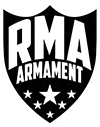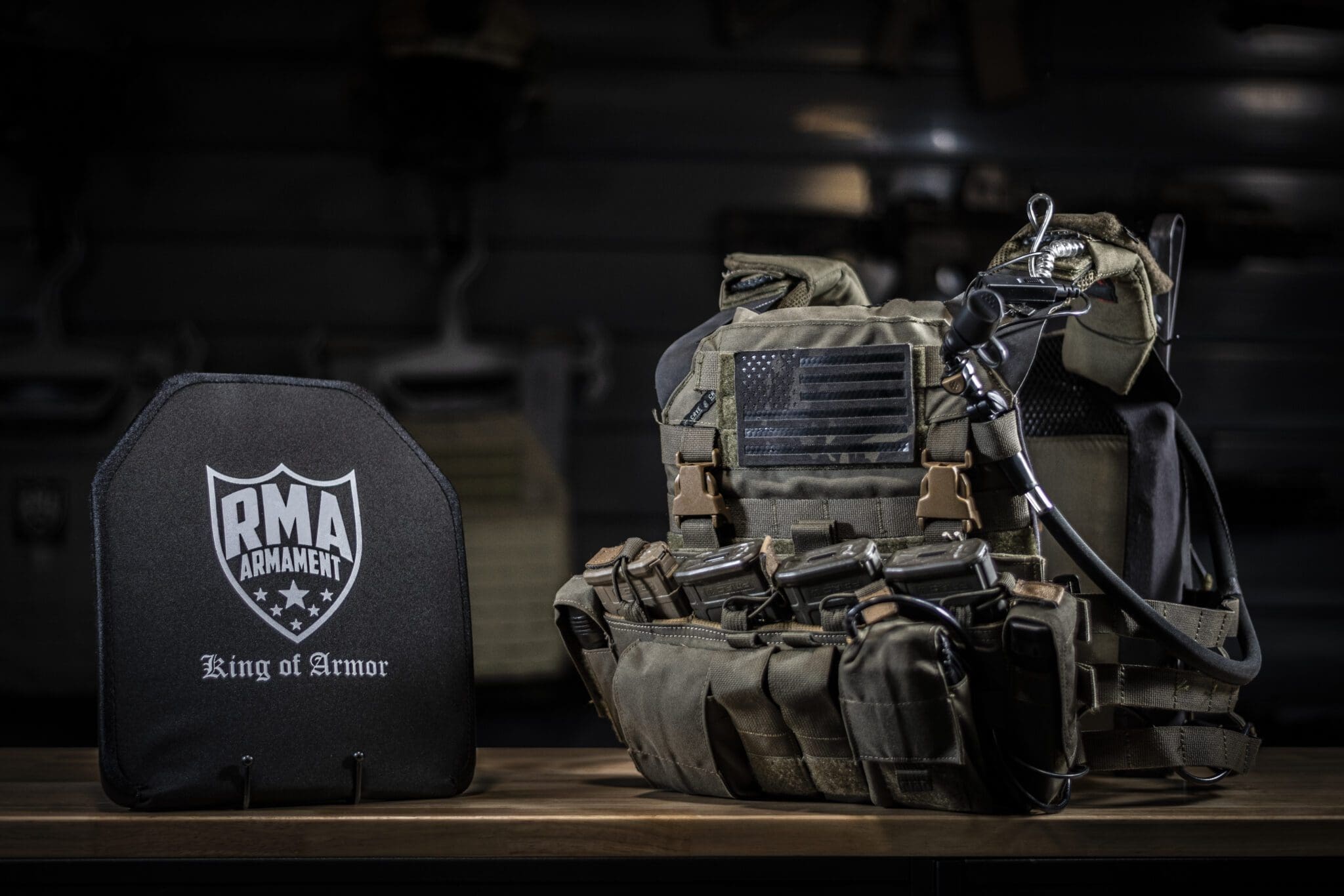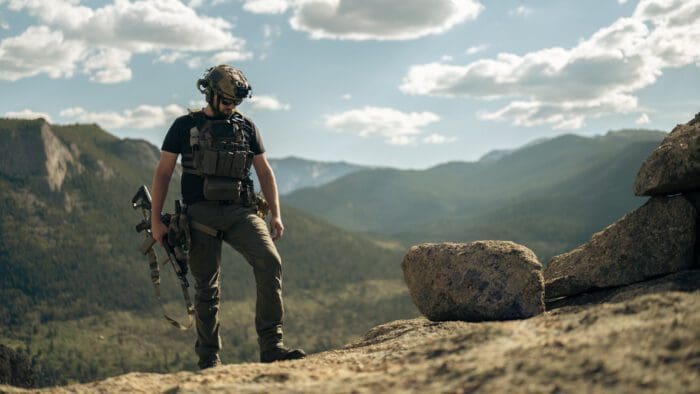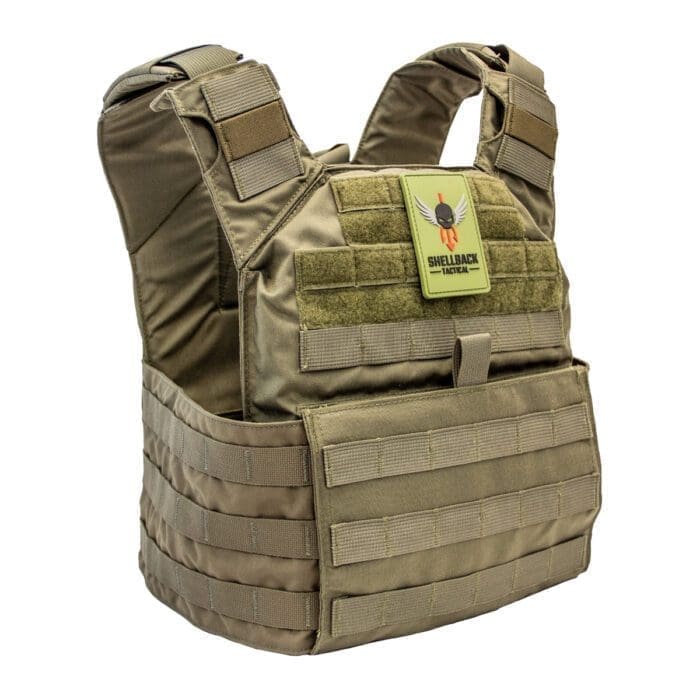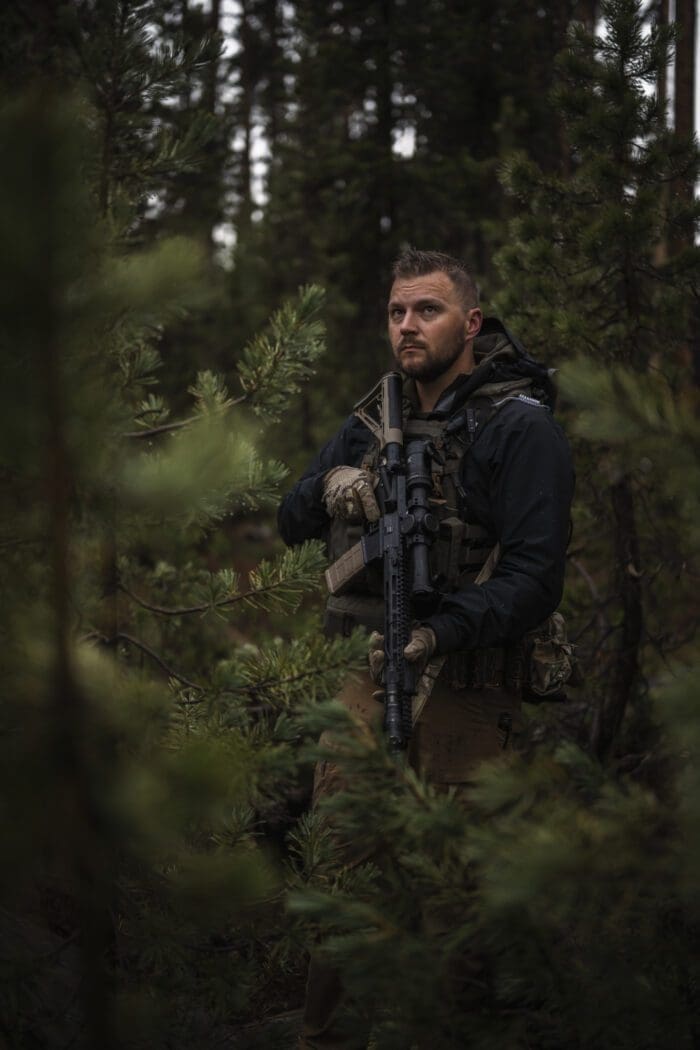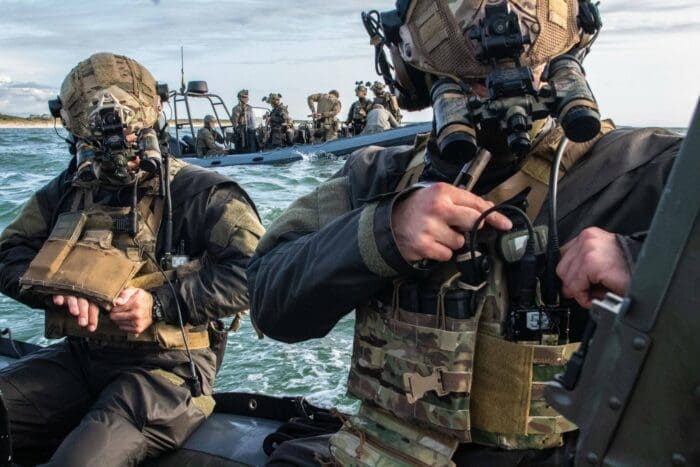Plate Carrier Setup is one of the most important things to consider when starting your journey of personal protection, whether you’re in the military, law enforcement, security or a civilian. It’s also important to note that a plate carrier setup can be different for everyone based on a variety of factors. Comfort, sizing, mobility, threat level, and mission or duty-specific equipment all play a role. Navy SEALs and police officers may have some overlap in duty gear, but there are a lot of differences, too. Let’s go over the basics so you can tailor the details to fit your individual goals.
What is a Plate Carrier?
A plate carrier is an external vest that is worn over your clothing meant to hold body armor plates which provide you personal protection from a wide range of ammunition. Plate carriers can be scalable, modular, both, or neither. A scalable plate carrier vest is a base carrier to which you can add shoulder, neck, groin, side plates, and other ballistic protection to. A modular plate carrier is a carrier that allows a user to easily add accessories like mag pouches or swap components like cummerbunds, shoulder pads, or back packs to achieve different loadouts for different missions. Most plate carriers on the market today combine some level of scalability and modularity.
How Should a Plate Carrier Fit?
Comfort and mobility should be the two most important aspects for decision making when it comes to the fit of your plate carrier. After all, your tactical vest should never compromise your movements.
A plate carrier with armor plates should cover your torso from right below the collarbone (approximately two finger widths) to the the base of your rib cage. A properly fitting carrier and snug cummerbund should also properly manage the weight load distribution, reducing the amount of pressure on the wearer’s shoulders.
A well-fitted plate carrier properly secures your body armor plates and protects your most vital organs while only minimally affecting your range of motion.
Many first-time buyers make a critical mistake when they seek maximum coverage that is detrimental to their body’s movement. You are better off avoiding being shot in the first place than becoming a slightly tougher bullet sponge.
Your body armor should be thought of as catastrophic insurance, not cover or concealment.
For most people, the lightest and slimmest possible loadout that still has all necessary mission equipment will be best. To stay in the fight, you never want your tactical vest to compromise your maneuverability. The Crye Precision JPC 1.0 and JPC 2.0 plate carriers are great examples of plate carriers that are lightweight and streamlined, yet rugged enough for the most demanding special operations missions.
When you add ballistic armor protection, ammo, medical kits (IFAKs) and other plate carrier essentials to your loadout, the weight can add up rather quickly. When these streamlined or minimalist kits are worn for extended periods of time, they may create hotspots of skin abrasion, uneven weight distribution, heat rash, or other issues that aren’t immediately apparent on your short-term missions. It’s important to remember that no one plate carrier setup is ideal for every mission set. But there are some fundamental principles we can use to determine which plate carrier setup is right for you.
How Should I Choose My Plate Carrier?
Your personal loadout will begin at your choice of plate carrier. Since not all carriers are able to carry the same equipment or configuration, first determine what your mission is and what kind of logistical support you have behind you. Like everything in life, your loadout is a series of trade-offs.
Here’s five questions you can ask yourself to figure out how to set up your carrier.
-
What are the most likely threats you will face?
- Rifles, handguns, explosives? Are you assaulting a fortified compound overseas with 50 armed military guards, or are you defending against 1-3 people breaking into your house with handguns?
-
What equipment do you need to accomplish your mission?
- Are breaching, K9, surveillance, or other tools necessary for your loadout? Are you defending your apartment in the city, a routine suburban 8-hour law enforcement patrol, or a week-long surveillance mission high in the mountains?
-
What should you prioritize in your kit?
- You need to be able to access primary and secondary ammunition rapidly in combat. But you aren’t going to be munching on snacks unless you’re outside of immediate danger.
-
What is your Area of Operations?
- How much armor protection and equipment is beneficial, and at what point is it simply more bulk and weight than necessary? How will the terrain affect your equipment selection?
-
Which carriers will best fit my plates and carry all mission-essential equipment without overburdening me?
-
Don’t attach too many things to a minimalist loadout or you’ll be in pain; don’t get too much carrier for minimal equipment.
-
Let’s look at a few examples to distill how to think about it.
Navy SEALs
The most imitated and idolized special operations force in the world doesn’t have a standard kit setup that everyone abides. Because direct-action special operations missions can vary widely in scope and they often have access to equipment, support, and logistics that you do not, it doesn’t necessarily track that a cool loadout you see in a movie is anything like what they have or what you should have.
High value target capture or kill missions like the Bin Laden raid are probably the most idealized version of what SEALs do, although this force accomplishes an enormous variety of missions. These kind of direct action missions have plate carrier setups that are often imitated by others, even when it doesn’t make any sense.
Sabotaging a ship requires SCUBA gear, but not armor. Capturing Bin Laden requires armor, but not SCUBA gear. Remember to keep your mindset flexible when determining your kit. There is no single setup that fits every mission or that is objectively better than any other.
-
In something like the Bin Laden raid, we would account for the possibility of rifle and pistol fire. Our largest threat is always being caught by Pakistani police or military forces. In this case, it is best to stay slim and ensure protection from rifle and pistol fire–both defeated by rifle plates–while leaving extra bulk behind for faster mission accomplishment. Time was of the essence more than anything else.
-
In these kind of smash-and-grab jobs, it’s important that our team members carry only what is needed. Plus, we’ll need to leave extra room in ourr packs or bring extra bags for SSE. Unnecessary bulk and weight will fatigue the wearer and make it more difficult to maneuver inside a vehicle or building. Every piece of gear you add to your carrier represents not only more weight, but more snag hazards for loose nails and other obstructions. Your gear’s bulk also creates a larger visual target profile for hostile adversaries.
-
Offensive and defensive equipment takes priority above all else. Since this is a rapid capture or kill and intelligence gathering mission, SEALs might need ammunition, grenades, breaching tools, and packable or expandable bags of some kind. No snacks or surveillance tools here.
-
The AO in this circumstance is a small house in a neighborhood next to a military base. That means running slimmer kit, but also preparing for ground elements to help extract if air exfiltration should fail. You might have vehicles, ammunition, or other tools on standby if your helicopters are compromised. Having these kind of support elements means that you don’t need to carry some equipment on your body.
-
In this case, a carrier like the Crye JPC 2.0 or 1.0 would be ideal. Crye’s JPC line is slimmed down to aid in rapidly working through confined spaces and getting to extract. But, it allows for enough modularity and equipment add-ons for exactly this kind of quick mission.
SWAT Teams
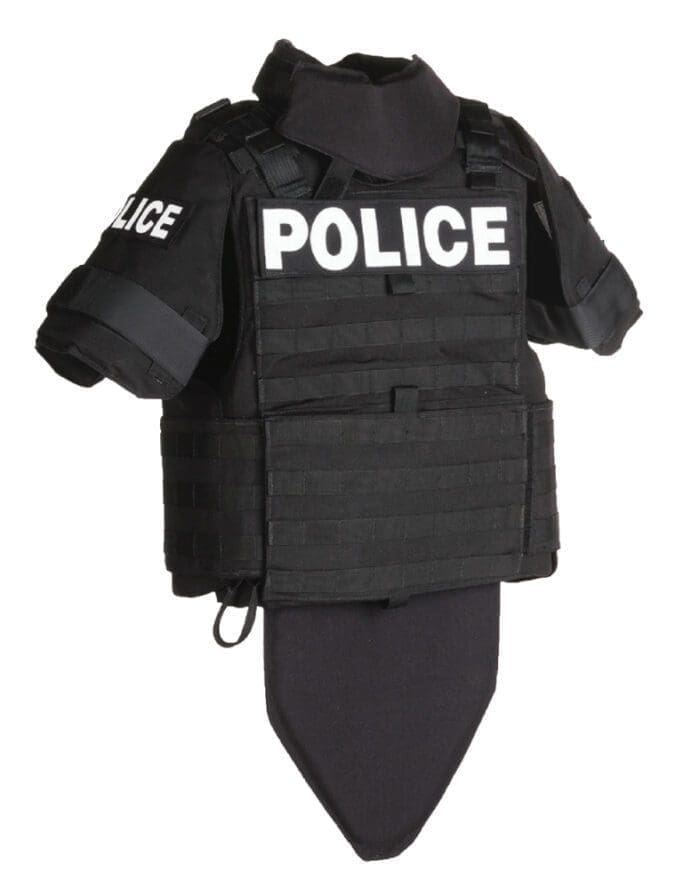 SWAT Teams utilize the same methodology for determining plate carrier setup, but come to the opposite conclusion. Police SWAT teams face pistol threats at a substantially higher rate than overseas special operations forces. They often conclude that scalable armor systems are of greater benefit than slimmer, modular systems.
SWAT Teams utilize the same methodology for determining plate carrier setup, but come to the opposite conclusion. Police SWAT teams face pistol threats at a substantially higher rate than overseas special operations forces. They often conclude that scalable armor systems are of greater benefit than slimmer, modular systems.
-
Handguns account for about 80% of firearms threats faced by US law enforcement. Extended coverage soft armor in levels II or IIIA makes sense when entering a confined space like a single family home or apartment to capture an assailant with the ability to fire through walls and from which you cannot practically seek suitable cover or concealment. In this case, our SWAT teams are very much preparing to become toughened bullet sponges.
-
Police are in the business of apprehending suspects for a trial, not ‘capture or kill’ missions. That means there needs to be extra focus on greater protection for each officer and things like handcuffs or hobbles.
-
Police are in the business of protecting all human life–even that of suspects. After all, a suspect is innocent until proven guilty. Medical gear is critical to have on-hand for SWAT teams for both themselves and the suspect. Again, it is their job to bring a criminal suspect to trial, not to dish out punishment. Ammunition, flashbangs or CS gas, and restraints are also at the top of the priority list. It’s also likely that at least one team member has K9 gear.
-
Because SWAT AOs are so small, they are able to wear more armor than our SEALs. In this case, they are driving to a building with backup and emergency medical on standby right outside the house. Slimmed down kit isn’t beneficial here. Extended armor coverage represents only a marginal problem in this small area with plenty of logistical and tactical support. They’re driving right up to the house, kicking in the door, arresting their suspect, and walking them out to a waiting car. Time on target isn’t as important because there are no political complications from being on foreign soil. Plus, it is unlikely in most situations that a secondary subject will attack a large police force.
-
In this case, a full extended coverage tactical vest like this is ideal.
As you can see, there’s some overlap in mission and equipment between SWAT and SEALs. But their plate carrier setup can vary widely based on the specifics of their desired outcome, support, and logistics. Your plate carrier setup may be completely different than either of these.
How Should I Configure My Own?
It’s important to minimize your gear’s impact on your athletic performance. You’ll also want to keep your quick access priority items like magazines arranged for ease of rapid access. We’ll discuss some specifics of plate carrier setup in our next blog.
